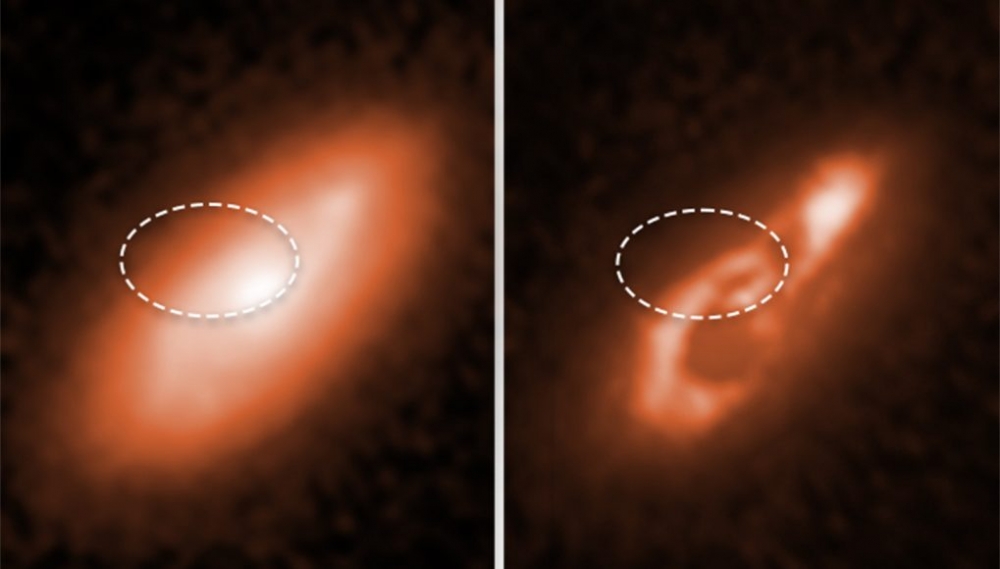Some fast radio bursts come from the spiral arms of other galaxies

A Hubble Space Telescope image (left) of a galaxy known to host a ‘fast radio burst’ helps ID where in the galaxy the blast originated (oval). After image processing (right), the burst’s origin appears centered on one of the galaxy’s spiral arms. NASA, ESA, ALEXANDRA MANNINGS/UNIVERSITY OF CALIFORNIA SANTA CRUZ, WEN-FAI FONG/NORTHWESTERN UNIVERSITY, ALYSSA PAGAN/STSCI
Locating the bursts’ homes suggests a connection to ordinary, young stars
By Lisa Grossman JUNE 1, 2021
Five brief, bright blasts of radio waves from deep space now have precise addresses.
The fast radio bursts, or FRBs, come from the spiral arms of their host galaxies, researchers report in a study to appear in the Astrophysical Journal. The proximity of the FRBs to sites of star formation bolsters the case for run-of-the-mill young stars as the origin of these elusive, energetic eruptions.
“This is the first such population study of its kind and provides a unique piece to the puzzle of FRB origins,” says Wen-fai Fong, an astronomer at Northwestern University in Evanston, Ill.
FRBs typically last a few milliseconds and are never seen again. Because the bursts are so brief, it’s difficult to nail down their precise origins on the sky. Although astronomers have detected about 1,000 FRBs since the first was reported in 2007, only 15 or so have been traced to a specific galaxy.
See full text